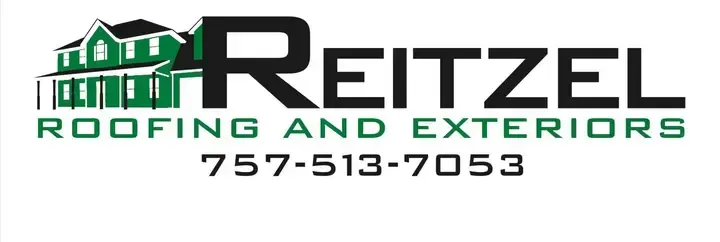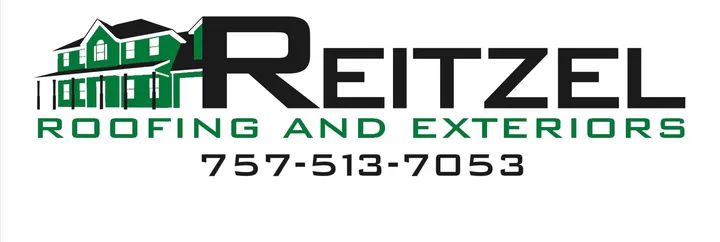LEARNING CENTER
CHECK OUT SOME OF OUR LATEST ARTICLES FROM IN OUR LEARNING CENTER

Roofing Safety 101: Fall Protection & OSHA Compliance
When it comes to roofing services, safety isn't just a priority—it's a fundamental necessity. Roofing work inherently involves risks, from working at heights to handling heavy materials and operating power tools. To mitigate these risks and ensure the well-being of workers, navigating safety standards and aligning with OSHA regulations.
In this guide, we'll delve into the importance of adhering to safety standards and OSHA regulations when performing roofing services. We'll explore the reasons why compliance is essential, the benefits it offers, and the practical steps roofing contractors can take to maintain a safe work environment.
What is OSHA?
OSHA stands for the Occupational Safety and Health Administration. It's a federal agency in the United States that is part of the Department of Labor. OSHA's mission is to ensure safe and healthy working conditions for employees by setting and enforcing standards and providing training, outreach, education, and assistance. OSHA regulations cover a wide range of industries and workplace hazards, including construction, manufacturing, healthcare, and more.
Navigating safety standards and aligning with OSHA regulations is essential when performing roofing services for several reasons:
Worker Safety: Roofing is inherently hazardous work, involving tasks such as working at heights, handling heavy materials, and using power tools. Compliance with safety standards and OSHA regulations helps protect workers from accidents, injuries, and fatalities by establishing guidelines for safe work practices, proper training, and the use of personal protective equipment (PPE).
Legal Compliance: OSHA regulations are legally binding requirements that employers must follow to ensure the safety and health of their workers. Failure to comply with these regulations can result in fines, penalties, and legal liabilities for employers. By navigating safety standards and adhering to OSHA regulations, roofing contractors can avoid costly violations and legal consequences.
Client Trust and Reputation: Clients expect roofing contractors to prioritize safety and adhere to industry standards and regulations. Demonstrating a commitment to safety not only protects workers but also enhances client trust and confidence in the roofing company's professionalism and reliability. Compliance with safety standards can also help maintain a positive reputation and attract new customers.
Risk Mitigation: Roofing work involves inherent risks, including falls, slips, trips, and exposure to hazardous materials. Navigating safety standards and following OSHA regulations helps mitigate these risks by identifying potential hazards, implementing safety measures, and providing appropriate training and equipment. This proactive approach reduces the likelihood of accidents and minimizes the potential for workplace injuries and illnesses.
Cost Savings: While investing in safety measures and compliance with OSHA regulations may require upfront costs, it can result in long-term cost savings for roofing contractors. By preventing accidents and injuries, businesses can avoid expenses related to medical bills, worker compensation claims, insurance premiums, and lost productivity. Additionally, maintaining a safe work environment can help attract and retain skilled workers, reducing turnover and recruitment costs.
According to OSHA (Occupational Safety and Health Administration) regulations, any worker on a roof with an unprotected edge 6 feet or more above a lower level must have proper fall protection systems in place. Failure to comply can result in hefty fines and penalties for roofing companies.
Fall Protection Systems
Guardrail Systems
Guardrails must be installed along unprotected edges of roofs that are 6 feet or more above a lower level. OSHA specifies requirements for guardrail height, strength, surface dimensions, and more. For example, the top rail must be 42 inches plus or minus 3 inches above the roof surface.Personal Fall Arrest Systems (PFAS)
When guardrails or other conventional fall protection is not feasible, workers must use a PFAS. This involves wearing a full-body harness with a lanyard or lifeline securely attached to an anchor point capable of supporting at least 5,000 pounds per attached worker. PFAS must be inspected before each use.Safety Net Systems
On some large commercial roofing projects, suspended safety net systems can be installed to catch falling workers. OSHA requires these nets to be installed as close as possible under working surfaces but no more than 30 feet below.Warning Line Systems
Warning lines made of ropes, wires or chains can act as barriers around unprotected roof sides/edges. But workers must still use guardrails, PFAS or safety nets in these areas.Covers for Roof Openings/Holes
Any openings or holes in roofs (including skylights) must be covered or protected by guardrails to prevent falls through the opening.Protection from Falling Objects
If there is risk of tools, materials or other objects falling from roofs and striking workers below, OSHA requires toeboards, screens, guardrail systems, canopies or other falling object protection.
Safety Equipment
There are a couple of key reasons why safety equipment needs to comply with OSHA standards, especially for contractors:
Worker Safety: OSHA regulations are established to minimize workplace hazards and ensure worker safety.
Legal Compliance: OSHA has the authority to inspect workplaces and levy fines for non-compliance with safety regulations. This includes the use of unapproved safety equipment.
Project Specifications: Many construction projects will have safety requirements outlined in the contract specifications. These specifications often mandate OSHA-compliant equipment to ensure all workers on the site are adhering to the same safety standards.
Ladder Safety
Using ladder safety equipment that aligns with OSHA standards is crucial for preventing falls, complying with regulations, providing proper training to workers, managing risks, and promoting a culture of safety in the workplace
Training and Inspections
Training inspections conducted in accordance with OSHA (Occupational Safety and Health Administration) standards are essential for verifying that workers receive proper training on safety procedures and regulations. These inspections ensure that employers comply with OSHA requirements for training programs, including content, frequency, and documentation. Inspectors may assess the effectiveness of training through interviews, documentation review, and observation of work practices. Non-compliance with OSHA training standards can result in citations and penalties, making thorough training inspections crucial for workplace safety and regulatory compliance.
Proper fall protection is crucial but just one component of OSHA's roofing regulations. Roofers also need PPE, ladder safety, hazard training and more to comply fully with OSHA standards and protect themselves on the job.
At Reitzel Roofing and Exteriors, safety is our top priority. We take pride in a spotless safety record, achieved through rigorous adherence to OSHA regulations and a commitment to comprehensive training. Our "Roofing Safety 101" program ensures all our workers are equipped with the knowledge and tools to stay safe on the job. By prioritizing fall protection and OSHA compliance, we can focus on what we do best: delivering exceptional roofing services while protecting the well-being of our team. Choose Reitzel Roofing and Exteriors for peace of mind knowing your project is in the hands of safety-focused professionals.
Certainly! Here's how you can reach Reitzel Roofing and Exteriors for any questions about their roofing services or safety practices:
Phone: +1 757-513-7053
Email: info@reitzelexteriors.com
You can also find more information on their website at https://reitzelexteriors.com/.

Our Services
Roof Repairs
Roof Leaks
Roof Storm Damage
Roof Replacement
Residential Roofing
Commercial Roofing
Siding
Trim
Windows
Fencing
Decks
Resources
Learning Center
Financing
Areas We Service
About Us
Contact Us
Privacy Policy
Copyright © 2022 Reitzel Roofing and Exteriors
All Rights Reserved
Our Services
Resources










